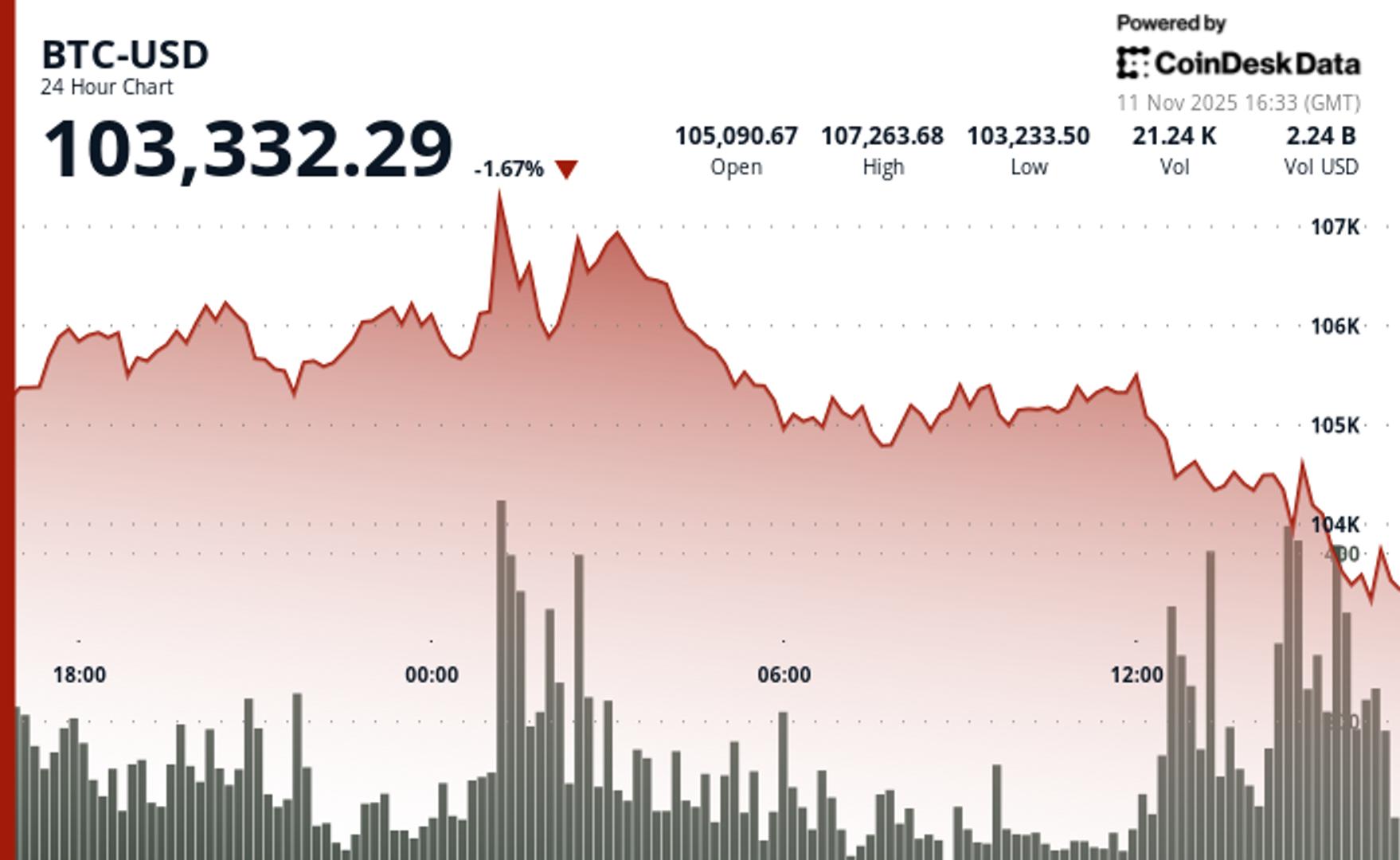“Crypto traders are taking profits on the bounce in prices, a Wintermute strategist said in a note.”, — write: www.coindesk.com
After briefly topping $107,000 overnight, the largest cryptocurrency fell to $103,200 by US morning hours. The drop erased the gains fueled by President Donald Trump’s “tariff dividend” plan and rising optimism that the US government shutdown is about to end.
Ethereum’s ether ETH$3,550.89 fell 1.2% to below $3,500 and large-cap altcoins such as Solana’s SOL SOL$164.18, XRP$2.4551 and SUI$2.0892 dropped 3%-4%, marking a broad retreat across digital assets.
The selling extended into crypto-related equities, especially among bitcoin miners positioned as infrastructure plays in the artificial intelligence (AI) boom. CleanSpark (CLSK) dropped 8%, Hut 8 (HUT) fell nearly 9% and Core Scientific (CORZ) tumbled 11.5% in the early session. TeraWulf (WULF) and Bitdeer (BTDR) also booked double-digit declines.
The sector-wide weakness stemmed from a roster of firms reporting weaker-than-expected earnings and growth outlook in a sign that the red-hot AI infrastructure trade, driven by lofty expectations of demand for increased computing capacity, is due for a correction.
Cloud computing provider CoreWeave lowered its next quarter outlook, citing delays in data center development, sending its stock 15% lower to the weakest level since early September. TeraWulf reported weak earnings and BitDeer posted deeper-than-expected losses and delays in its next-generation ASIC chips.
Rounding up the negative headlines was Japanese investment bank SoftBank selling its entire stake, worth $5.8 billion, in chipmaking giant and AI bellwether Nvidia (NVDA), driving the world’s most valuable company’s stock 3.5% lower. The tech-heavy Nasdaq index fell 0.7%, while the S&P 500 lost 0.3%.
Also this morning the ADP reported that US private employers cut an average of 11,250 jobs per week in the four weeks ending Oct. 25, signaling a deteriorating labor market.
The CME FedWatch tool now prices a roughly 67% chance of an interest-rate cut at the Federal Reserve’s December meeting, while Polymarket sees it slightly higher at 72%.
With Tuesday’s tumble, BTC has now filled the so-called CME gap formed over the weekend. The gap occurs when bitcoin futures traded on the CME, the preferred marketplace among US institutions, opens higher or lower than where it closed the previous session.
BTC revisiting these gaps in price is often seen in market behavior, although not all gaps are necessarily filled, CoinDesk senior analyst James Van Straten noted.
While the overall sentiment on crypto markets has improved the past few days as BTC and ETH bounced from the lows, traders are using the rebound as an opportunity to take profits across the board, Jasper De Maere, an OTC desk strategist at trading firm Wintermute, wrote in a Tuesday note.
“When it comes to alts, the theme is still profit taking into strength, leading to short-lived outperformance,” he said. “Consensus is building that majors need to move higher first.”
 A deep dive into Zcash’s zero-knowledge architecture, shielded transaction growth, and its path to becoming encrypted Bitcoin at scale.
A deep dive into Zcash’s zero-knowledge architecture, shielded transaction growth, and its path to becoming encrypted Bitcoin at scale.
- Shielded adoption surgedwith 20–25% of circulating ZEC now held in encrypted addresses and 30% of transactions involving the shielded pool.
- The Zashi wallet made shielded transfers the default, pushing privacy from optional to standard practice.
- Project Tachyonled by Sean Bowe, aims to boost throughput to thousands of private transactions per second.
- Zcash surpassed Monero in market share, becoming the largest privacy-focused cryptocurrency by capitalization.
View Full Report
